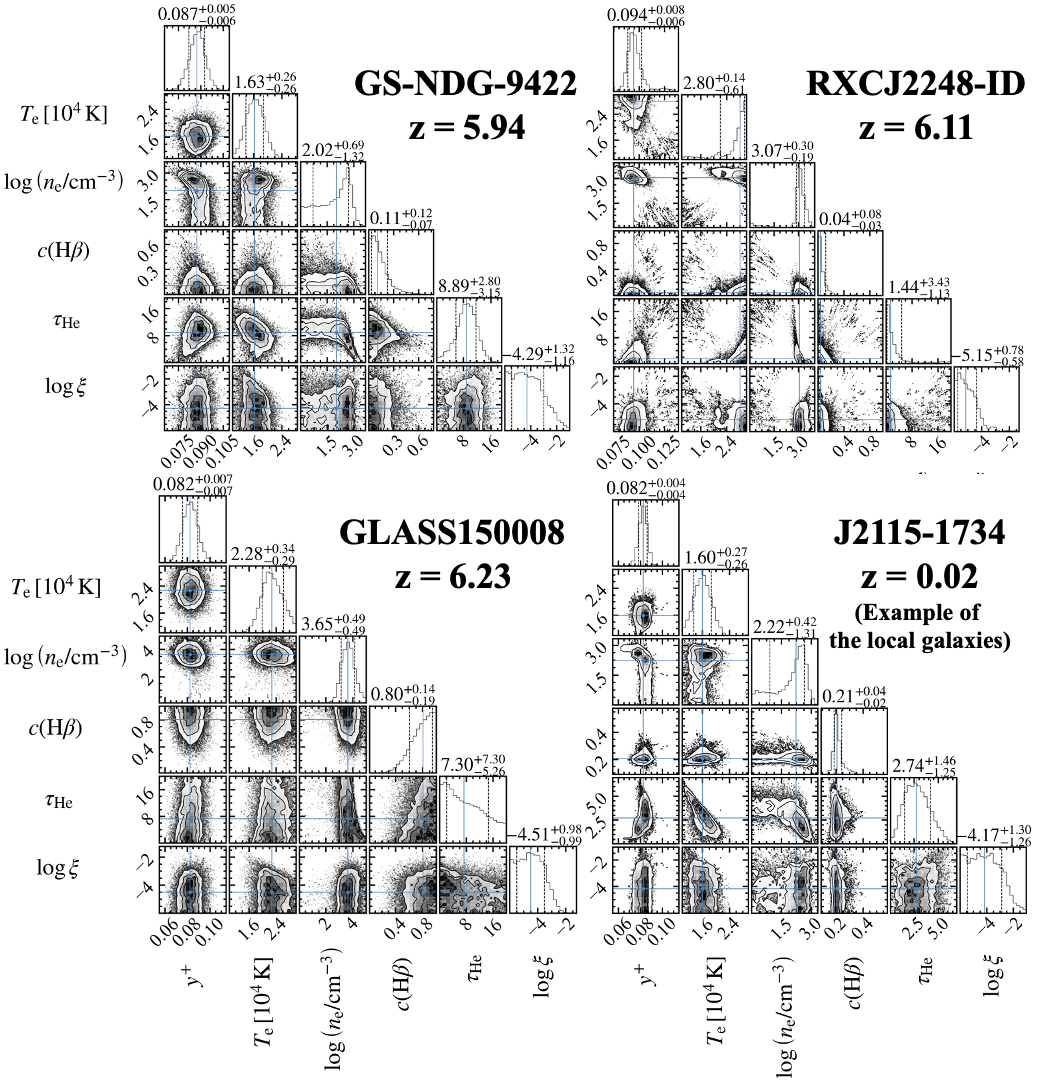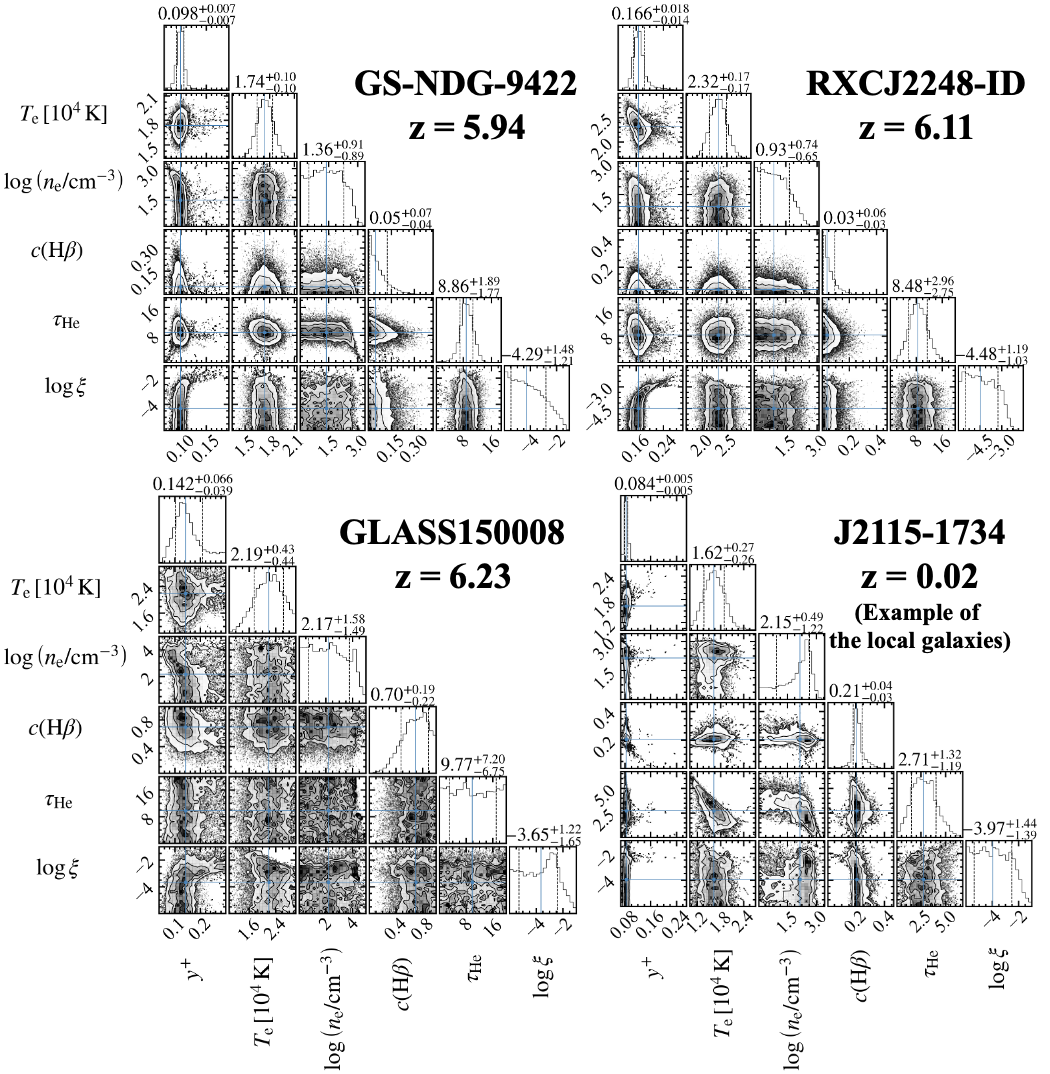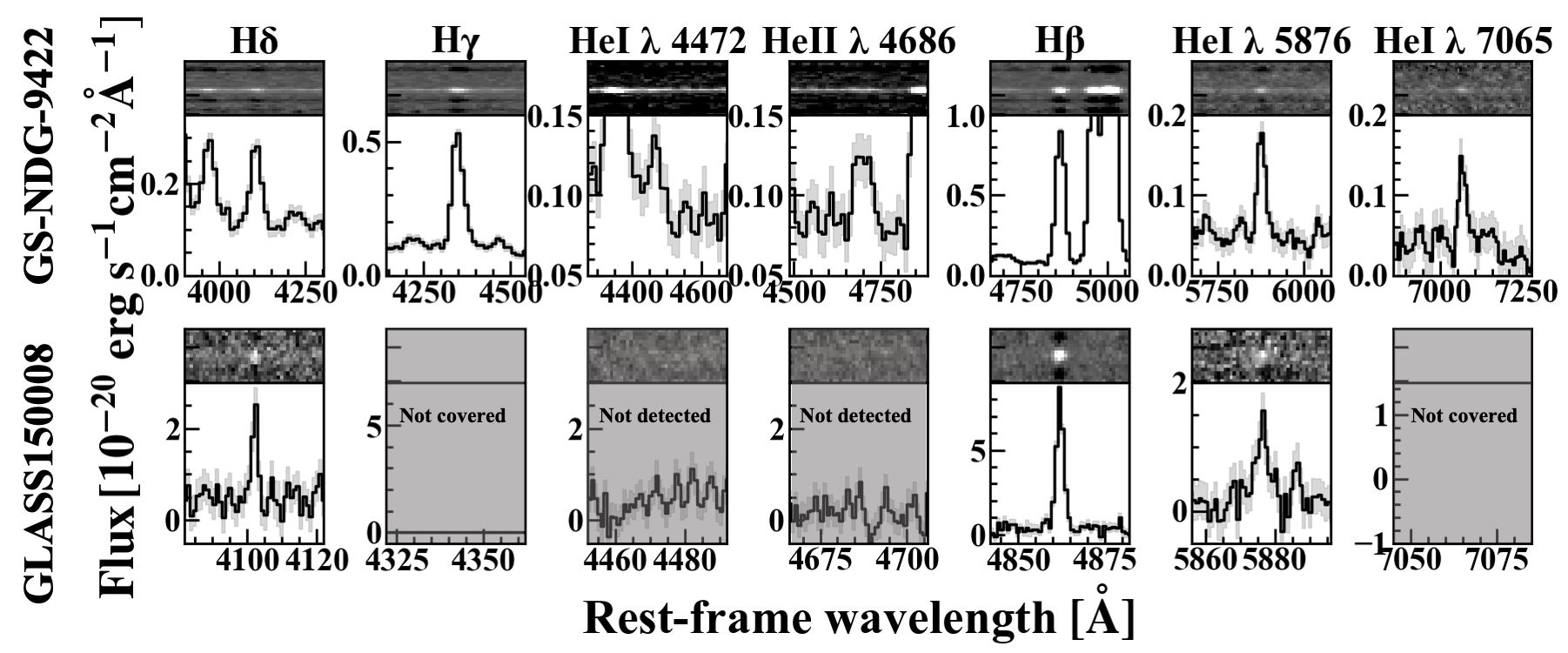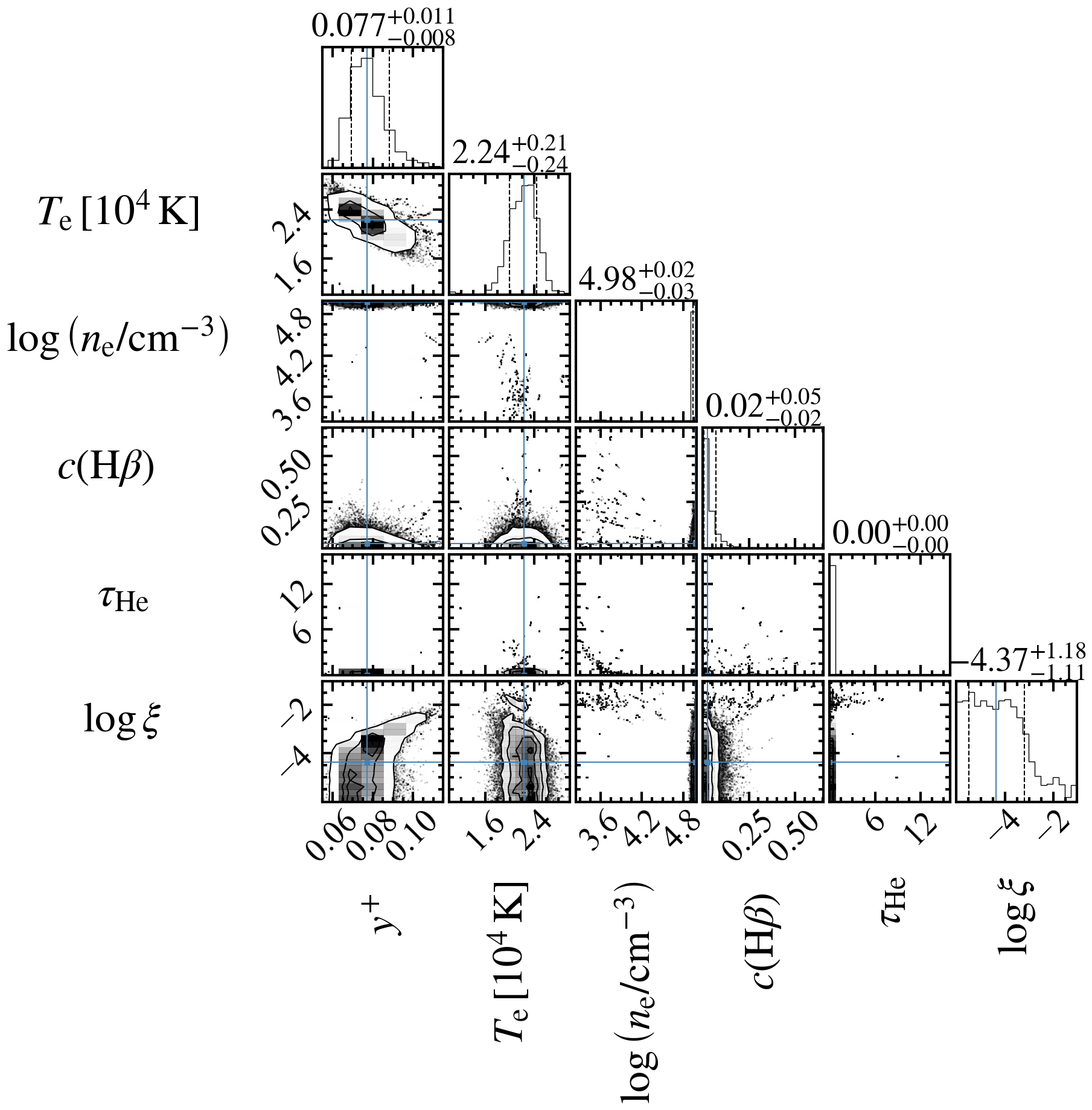研究成果・発表論文
Strong He I Emission Lines in High N/O Galaxies at z ~ 6 Identified in JWST Spectra: High He/H Abundance Ratios or High Electron Densities?
Yanagisawa, Hiroto, Ouchi, Masami, Watanabe, Kuria, Matsumoto, Akinori, Nakajima, Kimihiko, Yajima, Hidenobu, Nagamine, Kentaro, Takahashi, Koh, Nakane, Minami, Tominaga, Nozomu, Umeda, Hiroya, Fukushima, Hajime, Harikane, Yuichi, Isobe, Yuki, Ono, Yoshiaki, Xu, Yi, & Zhang, Yechi
要旨
We present He I/Hβ flux and He/H abundance ratios in three James Webb Space Telescope galaxies with significant constraints on N/O abundance ratios, GS-NDG-9422, RXCJ2248-ID, and GLASS150008 at z ~ 6 mostly with the spectroscopic coverage from He I λ4471 and He II λ4686 to He I λ7065, and comparing with 68 local dwarf galaxies. We find that these high-z galaxies present strong He I emission with He I/Hβ flux ratios generally larger than those of local dwarf galaxies. We derive He/H with all of the detected HeI, He II, and 2-3 hydrogen Balmer lines in the same manner as the local He/H determination conducted for cosmology studies. These high-z galaxies show He overabundance He/H ≳0.10 or high electron density of n e ~ 103-4 cm-3 much larger than local values at low O/H,








 Ja En
Ja En